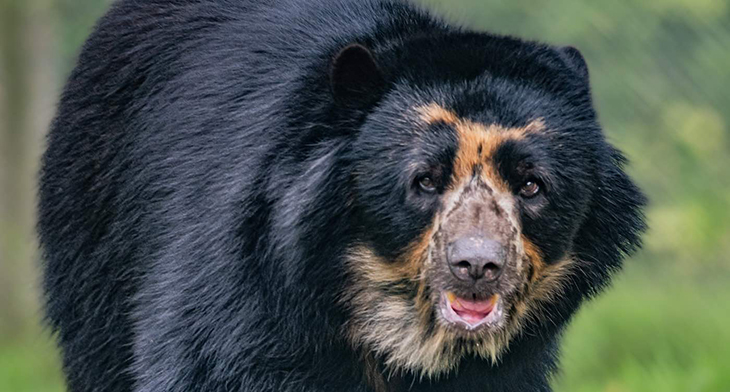
In a heartwarming effort to save the rare Andean bear species from the brink of extinction, two prominent zoos, one in the UK and the other in the US, have introduced their own ‘Paddington Bears.’
These charismatic Andean bears, known for their distinctive circular golden markings around their eyes, were first made famous due to the classic children’s book character Paddington Bear, who happened to be from the ‘deepest, darkest Peru,’ appearing in over 20 books written by a British author named Michael Bond.
Meanwhile, this particular species has become the focal point of a carefully orchestrated breeding program aimed at bolstering their dwindling population.
The Chester Zoo in England proudly unveiled a video showcasing Oberon, a ten-year-old male Andean bear who, in the eyes of zookeepers, is a ‘perfect match’ for the female bear, three-year-old Pacha. The hope is that Oberon and Pacha will “hit it off,” in due course, contribute to the population growth of this threatened South American species.
A director at the zoo, Mike Jordan, shared his excitement by the new arrival, saying Oberon has “settled in nicely” since arriving in Chester, spending his time “exploring, climbing trees and checking out the sights and scents of his new home.”
“Oberon hasn’t yet fathered any cubs, so his genetics could play an important role in the future of his species—adding a key new bloodline to the breeding program,” he added.
Simultaneously, across the Atlantic, the Nashville Zoo in Tennessee announced that they welcomed a male Andean bear, Pinocchio, a 10-year-old with a unique origin story. Rescued as an abandoned cub from the rural countryside in Ecuador, Pinocchio was deemed unfit to be released into the wild.
Having successfully fathered three cubs during his time at the Salisbury Zoo in Maryland, Pinocchio’s arrival at the Nashville Zoo is part of the broader Andean Bear Species Survival Plan (SSP) coordinated by the Association of Zoos and Aquariums.
These heartening introductions are not merely about adorable bear unions; they are critical components of a concerted effort to ensure the survival of a species at risk. The International Union for the Conservation of Nature (IUCN) has classified Andean bears as vulnerable to extinction, estimating their population to be fewer than 10,000 individuals. The primary threats to their existence included deforestation and human conflicts across their range in Peru, Venezuela, Colombia, Ecuador, and Bolivia.
Andean bears are uniquely adapted to their challenging mountainous habitats, boasting a thick, shaggy coat and powerful jaws specially designed for consuming hardened vegetation in the harsh climates of the Andes Mountains. Recognizing the urgency of the situation, zoos are collaborating on multiple fronts to contribute to the conservation of this vulnerable species.
Beyond the breeding program, the Chester Zoo has been actively engaged in on-the-ground efforts in Bolivia since 2016. Paul Bamford, a field manager for the Americas at Chester Zoo, elaborates on their comprehensive approach, emphasizing the importance of understanding Andean bears in their changing landscape.
“Our extensive camera traps in the region have revealed that 30 female bears, 17 males and 13 youngsters – the southernmost population in the world – share their home with some of Bolivia’s poorest and most vulnerable rural communities,” says Bamford.
“When bears wander into agricultural land and damage crops or kill livestock, it can often result in conflict or retaliation from the communities, which is one of the species’ main threats.”
Bamford adds, “To help combat this, we have supported the economic well-being of local communities, helping them to generate income through a range of sustainable initiatives and addressing poverty as a driver for conflict with bears.”
He continues, “Harvesting and selling honey, restoring forest habitat and training community members to monitor the bear population are just some of the initiatives that have resulted in a much more peaceful co-existence where both people and bears can thrive together.”This commitment extends beyond zoo enclosures, illustrating a dedication to preserving the natural habitats of these bears, ultimately contributing to the long-term success of conservation initiatives.
You can see more about this incredible story in the video below:
What are your thoughts? Please comment below and share this news!
True Activist / Report a typo


